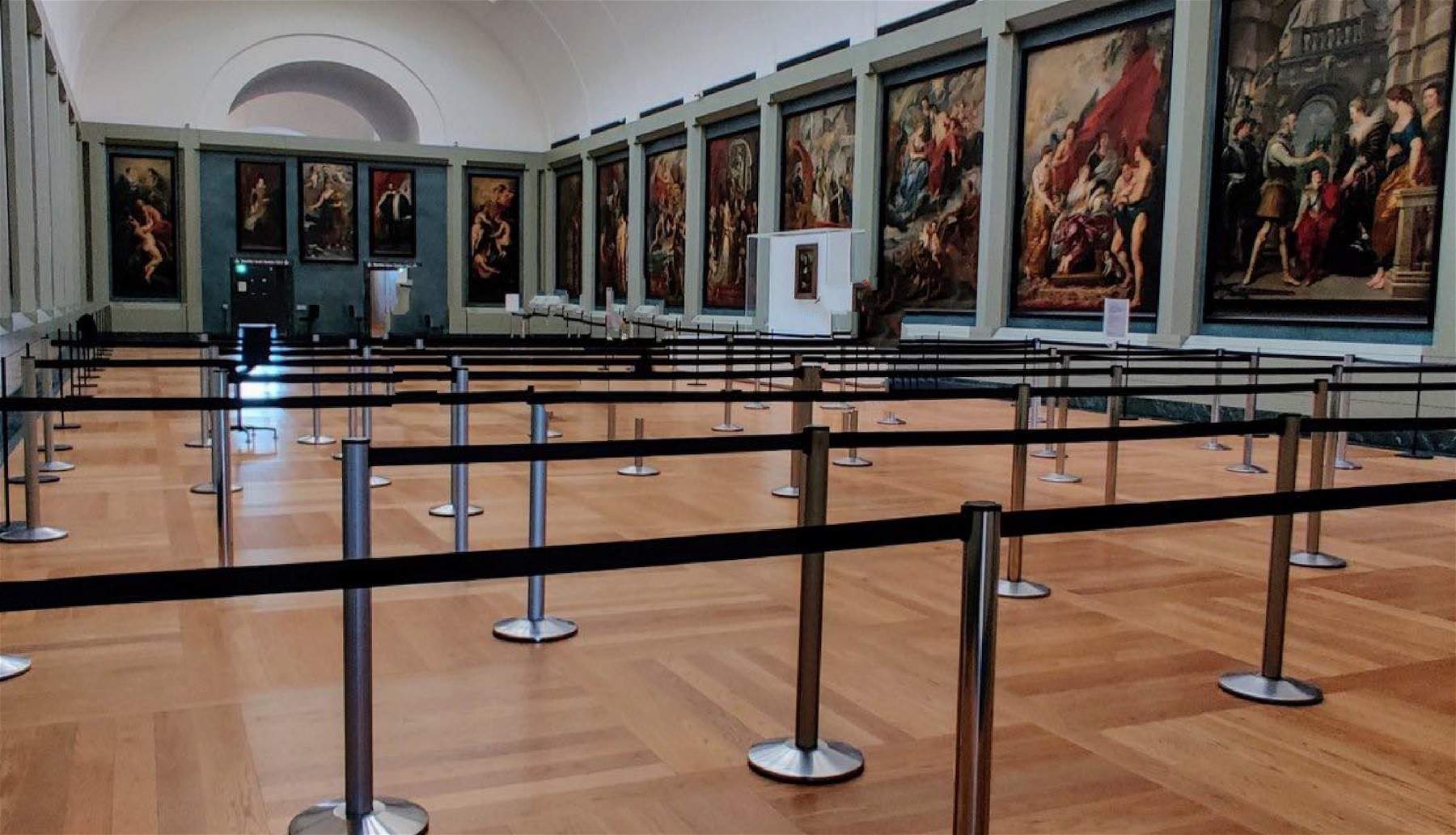As we told you a few weeks ago on our pages, the Louvre has had to temporarily move the Mona Lisa, Leonardo da Vinci’s famous masterpiece, to allow renovation work on the room that houses it, the Salle des États. As a result, the Da Vinci work has been moved, as of July 17, to the Galerie Médicis, which houses the cycle of 24 canvases by Pieter Paul Rubens that once adorned the halls of Palace Luxembourg. The problem is that in order to allow visitors to see the Mona Lisa, the Louvre has created a transennaded pathway reminiscent of those through which one must pass when queuing for attractions in large amusement parks, such as Disneyland or Gardaland. A solution that, moreover, mortifies the Rubens cycle, since the queue that forms to see the Mona Lisa prevents people from admiring the works of the great Flemish.
A choice that has been stigmatized by Didier Rykner, a journalist, art historian and founder of La Tribune de l’Art, France’s leading online publication for ancient art. In an article published within hours of the Mona Lisa’s move, Rykner said the Louvre’s decision is “totally unsuitable” because “in the middle of summer, when tourists invade the museum like never before, a visiting circuit is created that complitely sacrifices part of the Flemish painting’s rooms, even preventing the Mona Lisa from being seen under favorable conditions.”
In the article, Rykner, who went to the Louvre himself to check the visiting conditions (impossible!) illustrates passage by passage the route visitors are forced to take to see Leonardo’s work: a long line (of at least half an hour, but there are visitors who report that, from the entrance near the Pyramid to the Leonardo painting, it can take as long as an hour) in order to get to see the Mona Lisa, elevators near the hall blocked (the large influx of visitors who concentrate in this part of the museum makes them unusable), strong doubts about safety conditions for both visitors and the works (“let’s imagine,” Rykner points out, “what could happen in a moment of panic under these conditions: we can’t help but wonder about compliance with safety conditions.”). The photographs Rykner personally took during his visit to the Louvre and included in his article are striking.
“All this,” Rykner concludes, “testifies above all to a great level of incompetence. How much longer will tourists accept being treated like beasts? How long will it take before those in charge of security decide that this is not tolerable?” Questions that must necessarily be answered, and which must open a broader reflection on the role of museums and their iconic works.
In photos from La Tribune de l’Art, the transfenced path to see the Mona Lisa.
 |
 |
| Louvre like Disneyland: queues to see the Mona Lisa take place in a transnational pathway. What about security? |
Warning: the translation into English of the original Italian article was created using automatic tools. We undertake to review all articles, but we do not guarantee the total absence of inaccuracies in the translation due to the program. You can find the original by clicking on the ITA button. If you find any mistake,please contact us.